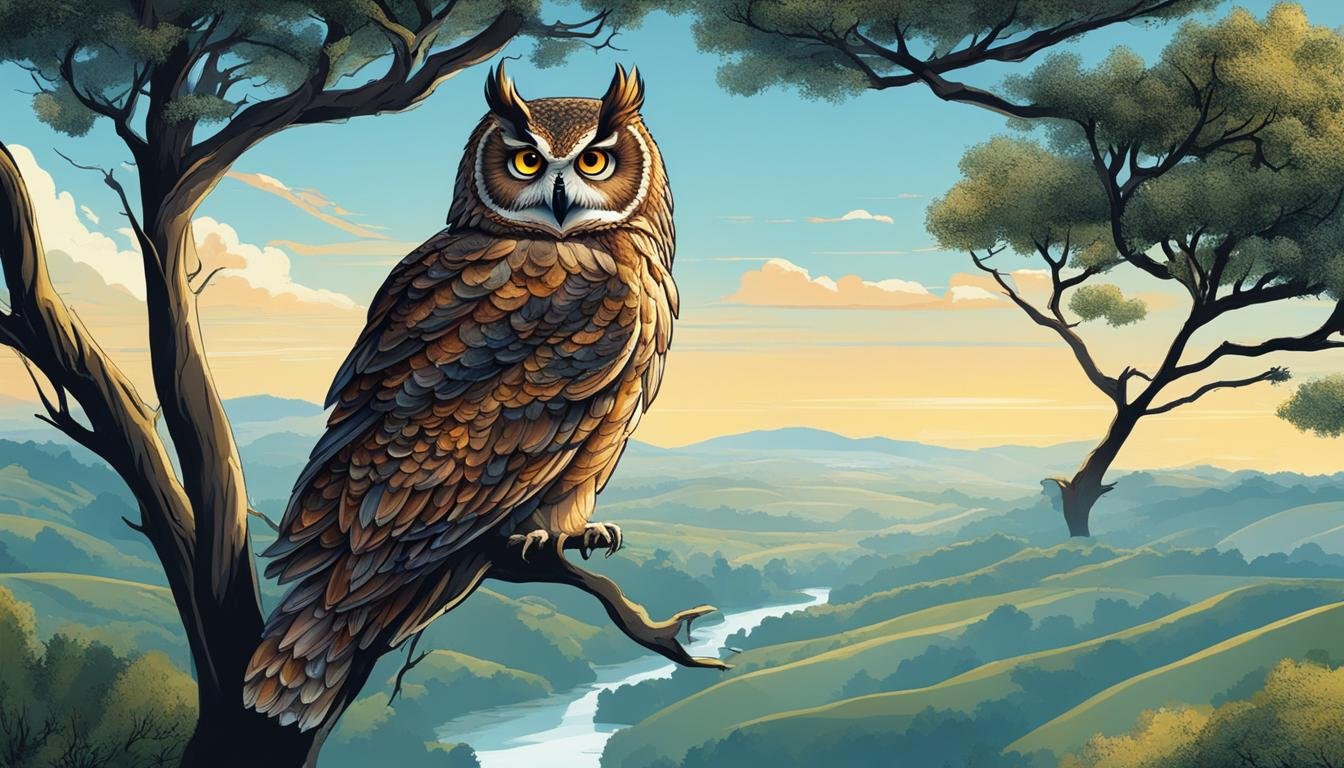British owls have a unique repertoire of vocalizations that they use to communicate with each other and establish their territories. The sounds they make can vary depending on the species, but common owl vocalizations in Britain include hoots, screeches, and whistles. For example, the tawny owl is known for its classic “hoo-hoo-hoo-hoo” call, while the barn owl produces a distinctive screech that is often described as a “shriek”. Other species like the little owl and long-eared owl have their own unique vocalizations. These owl sounds can be heard throughout the countryside in Britain, especially during the nighttime hours when owls are most active.
Key Takeaways:
- British owls communicate through a variety of vocalizations, including hoots, screeches, and whistles.
- Each owl species in Britain has its own unique call, allowing birdwatchers to identify them by their sounds.
- Owl sounds can be heard throughout the countryside in Britain, particularly during the nighttime hours.
- Listening to sound recordings can help bird enthusiasts become more familiar with British owl vocalizations.
- The diverse range of owl sounds in Britain is sure to captivate and intrigue nature lovers.
Identifying British Owl Sounds
Each species of owl in Britain has its own unique call, allowing experienced birdwatchers and owl enthusiasts to identify them by their vocalizations. For example, the tawny owl’s call is a rhythmic hooting sound, often described as “tu-whit, tu-whoo” or “hoo-hoo-hoo, hoo-hoo”. The barn owl, on the other hand, produces a screeching call that sounds like a high-pitched scream. The little owl has a distinctive “tewit-tewoo” call, while the long-eared owl creates a soft, low-pitched “oo-oo” sound. By familiarizing themselves with these distinct calls, birdwatchers can become skilled at identifying different owl species in the British countryside.

Identifying owl sounds can be a challenging but rewarding task. It requires careful listening and observation, as well as a deep understanding of each owl species’ vocal repertoire. One useful technique is to compare the sounds you hear in the field to audio recordings of known owl calls. This can help confirm your identification and provide valuable learning opportunities. Additionally, paying attention to the context in which the sounds are heard can also provide clues about the species present. For example, tawny owls often call during the night, while little owls are more commonly heard during the day.
Table: British Owl Species Calls
| Owl Species | Distinct Call |
|---|---|
| Tawny Owl | “tu-whit, tu-whoo” or “hoo-hoo-hoo, hoo-hoo” |
| Barn Owl | High-pitched screech |
| Little Owl | “tewit-tewoo” |
| Long-eared Owl | Soft, low-pitched “oo-oo” |
By becoming familiar with the vocalizations of different owl species, birdwatchers can enhance their experience in the field and gain a deeper appreciation for the diversity of British owls. Remember, patience and practice are key to developing your skills in identifying owl sounds. So next time you’re out in the British countryside, listen closely and see if you can identify the unique call of a tawny owl or the haunting screech of a barn owl.
British Owl Sound Recordings
For those fascinated by the captivating vocalizations of British owls, there’s no better way to experience their sounds than through dedicated owl sound recordings. These recordings provide a unique opportunity to listen to the hoots, screeches, and calls of different owl species found in the UK.
With the advent of technology, accessing these sound recordings has become easier than ever. Numerous websites dedicated to bird sounds offer a wealth of resources, allowing you to immerse yourself in the enchanting world of British owl vocalizations. Additionally, specialized birdwatching apps provide a convenient platform to discover and enjoy these recordings at your fingertips.
Enhancing Your Birdwatching Experience
By delving into the diverse range of owl vocalizations in Britain, you can enrich your birdwatching adventures. Listening to the soothing hoots of a tawny owl or the eerie screeches of a barn owl adds a whole new dimension to your encounters with these magnificent creatures.
Furthermore, familiarizing yourself with the distinct calls of British owls through sound recordings enables you to identify different owl species with more precision. It allows you to fine-tune your birdwatching skills, making each sighting an even more rewarding experience.
So, whether you are an avid birdwatcher or simply appreciate the wonders of nature, take a moment to explore the mesmerizing world of British owl vocalizations. Immerse yourself in their unique sounds and let the symphony of owl hoots in the UK leave you spellbound.
FAQ
What are the common vocalizations of British owls?
British owls have a unique repertoire of vocalizations that include hoots, screeches, and whistles. Different species of owls in Britain have their own distinct calls, such as the rhythmic hooting of the tawny owl or the screeching call of the barn owl.
How can I identify British owls by their vocalizations?
Each species of owl in Britain has its own unique call, allowing experienced birdwatchers to identify them. For example, the tawny owl’s call is a rhythmic hooting sound, while the barn owl produces a high-pitched screech. By familiarizing yourself with these distinct calls, you can become skilled at identifying different owl species in the British countryside.
Where can I listen to British owl vocalizations?
There are various resources available to listen to the vocalizations of British owls, including online sound recordings and birdwatching apps. These recordings capture the unique sounds made by different owl species in the UK and can help enhance your birdwatching experiences.

